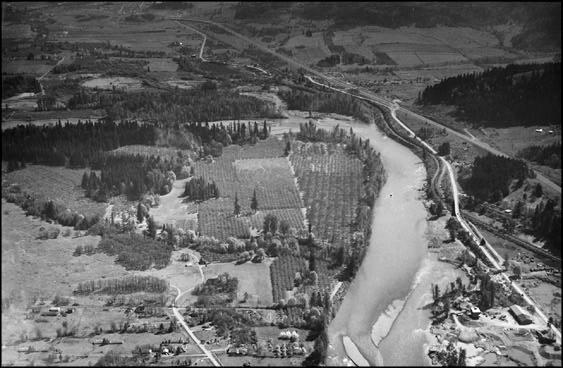Dorris Ranch
From Lane Co Oregon
Contents |
[edit] History
[edit] Foundation
About 2000 years before European settlement, the Kalapuya Indians lived there until the mid 1700s within the Willamette Valley and on present day Dorris Ranch. The Willamette Valley was home to thirteen to twenty different bands of Kalapuya Indians. Dorris Ranch specifically was home to the band of Native Americans called the Winefelley Band. All of the different bands of Kalapuya Indians had their own territory, and the Winefelley Band's territory was on the Dorris Ranch acreage.
After the Kalapuyan were decimated, the trappers then roamed the Willamette Valley, including Dorris Ranch. The fur trade brought trappers to this region from 1821-1843. Thomas McKay, from the Hudson's Bay Company, explored and trapped in the Willamette Valley. In the journal of Thomas McKay he wrote about a Kalapuya Indian village on or near Dorris Ranch.
Its roots go back to the earliest pioneer days, when William and Eliza Masterson and their five children staked out their 320-acre donation land claim there.
[edit] 1850s
The Mastersons built a small cabin in 1852. Over the years the property passed from hand to hand, until George and Marietta Thurston sold the remaining 258 acres for $4,000 to George and Lulu Dorris in 1892.
On the property they built their house, the Dorris House, the barn, and the Tomseth House. The Dorris House was built in 1897 and has perfect views of the orchards.
[edit] 1900s
The Tomseth House was built in 1910 and it overlooks the property. The barn was built in 1892, and it was first used as a cannery.
They planted fifty trees in 1903. George originally planted a couple different kinds of crops, peaches, cherries, grapes, walnuts, asparagus, and hops. The Dorris' first filbert trees came from Felix Gillet's Barren Hill Nursery in Nevada City, California. Apparently Gillet, who succeeded with walnuts but not with filberts, convinced Dorris that his Barcelona filberts would thrive in Oregon, where the native hazelnut, a relative of the filbert, grew as easily as wild blackberries.
"There are eleven separate orchards covering 75 acres and including about 9,250 filbert trees." For forty years, the Dorris Ranch Nursery proved to be a great producer of fine trees. During the years of operation the Dorris Nursery produced 70,000 trees annually. The trees were sold all throughout the Northwest. The Dorrises may have thrown themselves completely into the development of the ranch to make up for the tragic loss of their five children, who died one after another in infancy. It was a blessing that George's nephew Benjamin Fultz Dorris joined him as a partner in the ranch in 1925, after recovering from wounds he received in World War I.[1] The nursery, which started in 1925, continued until 1965.
George was a founding member of the Eugene Fruit Growers Association. The Eugene Fruit Growers Association, also known as Agripac, set up a cannery to can fruits and vegetables. The group thrived until about 1990 when they went out of business, according to Susan Morasci.
[edit] Present
Even today, more than 100 years later, Dorris Ranch still is a "fully-productive commercial filbert orchard." The ranch still produces 50 tons of filberts each year as a nonprofit organization.
As of the article written in 2000, Dorris Ranch is used for several different activities. One is Kids Club Summer Camp. This is a place where elementary aged school kids go during the summer and take part in activities such as field trips, sports, and swimming. Another way that Dorris Ranch is used is by people who choose the ranch at wish to get married. The couple is able to rent out the barn, Pump House with picnic area, or Tomseth House. In fact anyone can rent out any of the facilities, whether it be for business or a family get together. In addition to renting out the ranch, a person can take a hike on the tour trail, which winds you around the orchards, river, barn and Dorris House.

